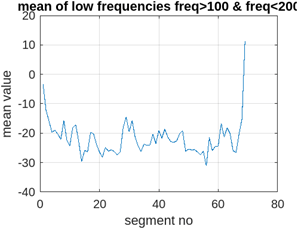Matlab Signal Processing

Matlab Signal Processing | Simulink | Matlab Online Nachhilfe Tutoring Coaching | frequency domain threshold | wav | electrical engineering |

Matlab Signal Processing | Simulink | Matlab Online Nachhilfe Tutoring Coaching | frequency domain threshold | wav | electrical engineering |
Author: Waqas Javaid
Abstract:
This MATLAB script presents a comprehensive framework for the calibration and design of high-precision sensor systems tailored for optomechanical applications. The script encompasses the calibration of cavity optomechanical displacement-based sensors, as well as the design considerations for accelerometers, force detection sensors, and torque magnetometry sensors. The calibration procedure involves processing sensor data, particularly from accelerometers and magnetometers, to derive accurate calibration parameters. A key aspect of the calibration process involves performing a spherical fit on the magnetometer data to determine the center, residue, and radius of the fitted sphere [1]. These calibration parameters are essential for ensuring the accuracy and reliability of sensor measurements.
The MATLAB script also includes simulations and visualizations to illustrate the calibration procedure and sensor design. Furthermore, the project incorporates Simulink models to simulate MEMS accelerometer systems, integrating force, translational dynamics, and voltage outputs. The resulting framework provides a comprehensive toolkit for sensor calibration, design, and simulation, contributing to advancements in high-precision sensor technologies. In addition to calibration, the script provides a platform for designing sensor systems suitable for various applications [2] [3]. Designs for accelerometers, force detection sensors, and torque magnetometer sensors are defined, considering parameters such as sensitivity, frequency range, and noise levels. These designs serve as a foundation for developing sensor systems tailored to specific operational requirements. The MATLAB code simulation also generates informative visualizations, including plots of sensor data, calibration results, and sensor designs. These visualizations aid in understanding the behavior and performance characteristics of the sensors, facilitating informed decision-making during sensor calibration and system design processes.
Author: Waqas Javaid
ABSTRACT
In this report a brief review on multilevel inverters and different multilevel inverter topologies are discussed. Inverter is a power electronic device that converts DC power into AC power at desired output voltage and frequency. Multilevel inverters nowadays have become an interesting area in the field of industrial applications. This Project mainly involves analysis of Cascaded H-bridge topology, conduction loss and switching loss calculations, LC filter design and different SPWM modulation techniques. It also involves implementing 3-level CHB MLI with and without SPWM on the Arduino UNO board.
This publication provides the process for obtaining of a self-inductance of electrical machines with a dependence on frequency and amplitude of an applied alternating current and consideration of a non-linearity and saturation effects in the equivalent circuit lumped parameter model that would have the same frequency and time domain characteristic as some desired investigated electrical machine. The values of inductances were calculated from measured impedances for wide ranges of frequencies and currents according to the theory of a complex inductance and iron losses. The measured data were analyzed and summarized in a table and then used for modeling of a automotive alternator. The model was supplied with curve fitted data. The simulation of a common automotive test case was obtained and compared with measurements. Good match between the theory and measurements and reasonability of the suggested approach were confirmed.
Full-Cycle-Ingenieursdienstleister und Lernplattform mit Schwerpunkt auf nachhaltigen Industriebereichen mit dem Ziel, Studenten und Unternehmen zu bilden und zu unterstützen.






Copyright © 2025 WiredWhite. Alle Rechte vorbehalten.
There was a problem reporting this post.
Please confirm you want to block this member.
You will no longer be able to:
Please allow a few minutes for this process to complete.

